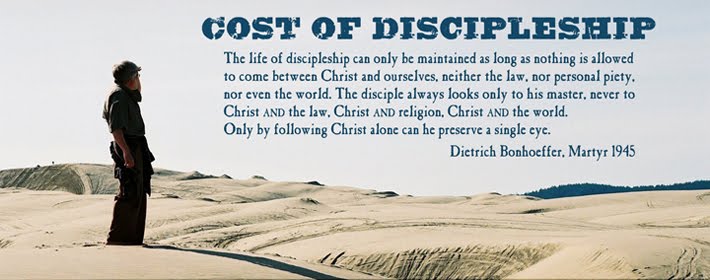 As we head into the final stretch of Μεγάλη Σαρακοστή, the Great Fast, it is well to remember our illustrious martyr-patriarch Gregory the Fifth, who suffered for Christ on the day of Pascha, 1821. Here is his story, from the two Wiki's, first from the regular Wikipedia…
As we head into the final stretch of Μεγάλη Σαρακοστή, the Great Fast, it is well to remember our illustrious martyr-patriarch Gregory the Fifth, who suffered for Christ on the day of Pascha, 1821. Here is his story, from the two Wiki's, first from the regular Wikipedia…Gregory V was Ecumenical Patriarch of Constantinople from 1797 to 1798, from 1806 to 1808 and from 1818 to 1821. He was responsible for much restoration work to the Patriarchal Cathedral of St George, which had been badly damaged by fire in 1738. At the onset of the Turkish Massacrees, as Ethnarch of the Greek Millet, Gregory V was blamed by Ottoman Sultan Mahmud II for his inability to suppress the Greek uprising. He was taken out of the Patriarchal Cathedral on Easter Sunday, 1821, directly after celebrating the solemn Easter Liturgy, and hanged (in full Patriarchal vestments) for three days from the main gate of the Patriarchate compound by order of the Sultan; his body was then taken down and delivered to a squad of Jews, who dragged it through the streets and finally threw it into the Bosphorus. The body was later recovered by Greek sailors and was eventually enshrined in the Metropolitan Cathedral of Athens. He is commemorated by the Eastern Orthodox Church as an ethnomartyr, Εθνομάρτυρας. In his memory, the main gates of the Patriarchate compound were welded shut in 1821 and have remained shut ever since.
From Orthodox Wikipedia…
Our father among the saints Gregory V of Constantinople was the 234th Patriarch of Constantinople. He served as patriarch for three separate periods at the turn of the eighteenth and nineteenth centuries and was martyred during the Greek War of Independence. He was glorified as a saint by the Church of Greece in 1921 and is commemorated as an ethnomartyr on April 10.
Life
Georgios Angelópoulos was born in Dimitsana, Arcadia prefecture in 1746 to poor parents. A studious child, Georgios attended school at Dimitsana before continuing his education in Athens for two years. With the help of his uncle he continued his education in the theological school at Smyrna for another five years. Having been raised in the hesychastic environment around the Monastery of Philosóphou he turned to a monastic life and was tonsured a monk in Strophades with the name Gregory. He continued his education in theology and philosophy at the School of Patmós.
After completing his education at Patmós, Gregory returned to Smyrna where he was ordained a deacon in 1775 by Metr. Procopius of Smyrna and subsequently became an archdeacon. Over the following years he was ordained a priest and a protosyncelos. In 1785, he was elected by the Patriarch of Constantinople to the position of Bishop of the Metropolis of Smyrna succeeding Procopius who had become Patriarch of Constantinople. In what was becoming a volatile political atmosphere, Gregory was elected to the patriarchal throne of Constantinople in May 1797. In a year he was deposed and deported to the Monastery of Iviron on Mount Athos where he lived an ascetic life of study. On September 23, 1806, the synod recalled him to the patriarchal see. With the shifting Turkish politics and the revolt of the Genitsars, Gregory’s second stint as patriarch ended in 1810 when he was expelled first to Pringipónisos, and then again to Mount Athos, where he stayed for nine years. On December 15, 1818, for the third time Gregory was called to the patriarchal see, this time at a crucial and tense time in the Greek struggle for independence.
In 1818, Gregory became a member of the Filikí Etería (Society of Friends) that was preparing for a revolt against the Turkish rule. However, when Alexander Ypsilantis crossed the Prut River, starting the Greek revolt in Romania, Gregory felt it necessary to excommunicate him to protect the Greeks of Constantinople from reprisals by the Ottoman Turks. The reprisals did come during Holy Week in April 1821 after the Greeks revolted in the Pelopónnisos.
 During celebration of the divine liturgy, with eight hierarchs, on the night of Pascha of April 10, Gregory was arrested and, by order of Sultan Mahmúd II, hanged on the front gate of the Patriarchate compound in his full Patriarchal vestments. The gate has been closed, locked, and not used since. After hanging for three days and being mocked by the passing crowds, his body was taken down and given to a group of Jews who dragged it through the streets of Constantinople before throwing it into the Bosphorus.
During celebration of the divine liturgy, with eight hierarchs, on the night of Pascha of April 10, Gregory was arrested and, by order of Sultan Mahmúd II, hanged on the front gate of the Patriarchate compound in his full Patriarchal vestments. The gate has been closed, locked, and not used since. After hanging for three days and being mocked by the passing crowds, his body was taken down and given to a group of Jews who dragged it through the streets of Constantinople before throwing it into the Bosphorus.Gregory’s body was recovered from the sea by a Greek seaman, Nicholas Sklavos, and secreted to Odessa, then in Southern Russia, where it was buried with honors at the Church of the Holy Trinity. Later his relics were enshrined in the Metropolitan Cathedral in Athens. His statue, along with that of Rigas Feraios, stands outside the University of Athens as great martyrs of the Greek Revolution.



No comments:
Post a Comment